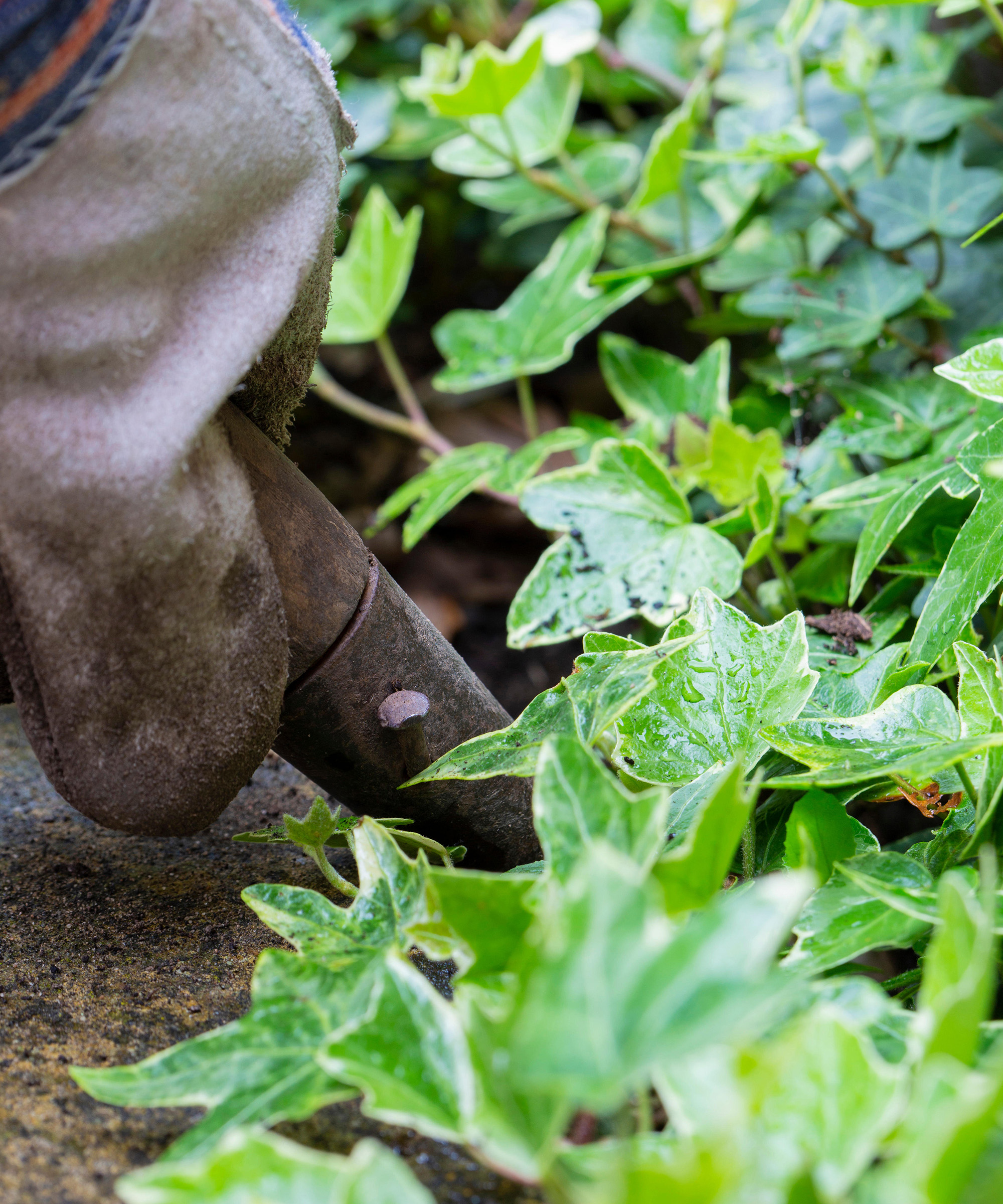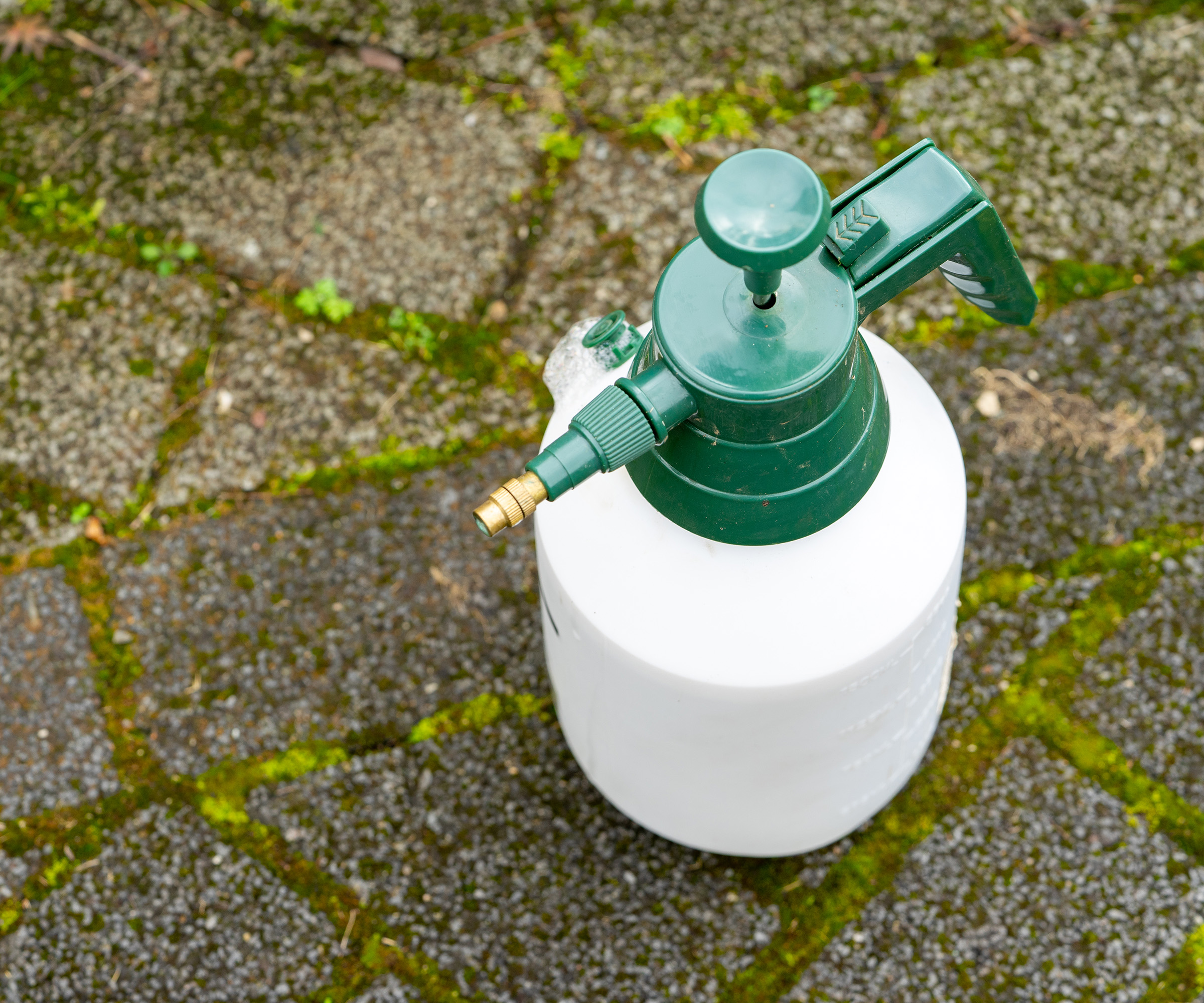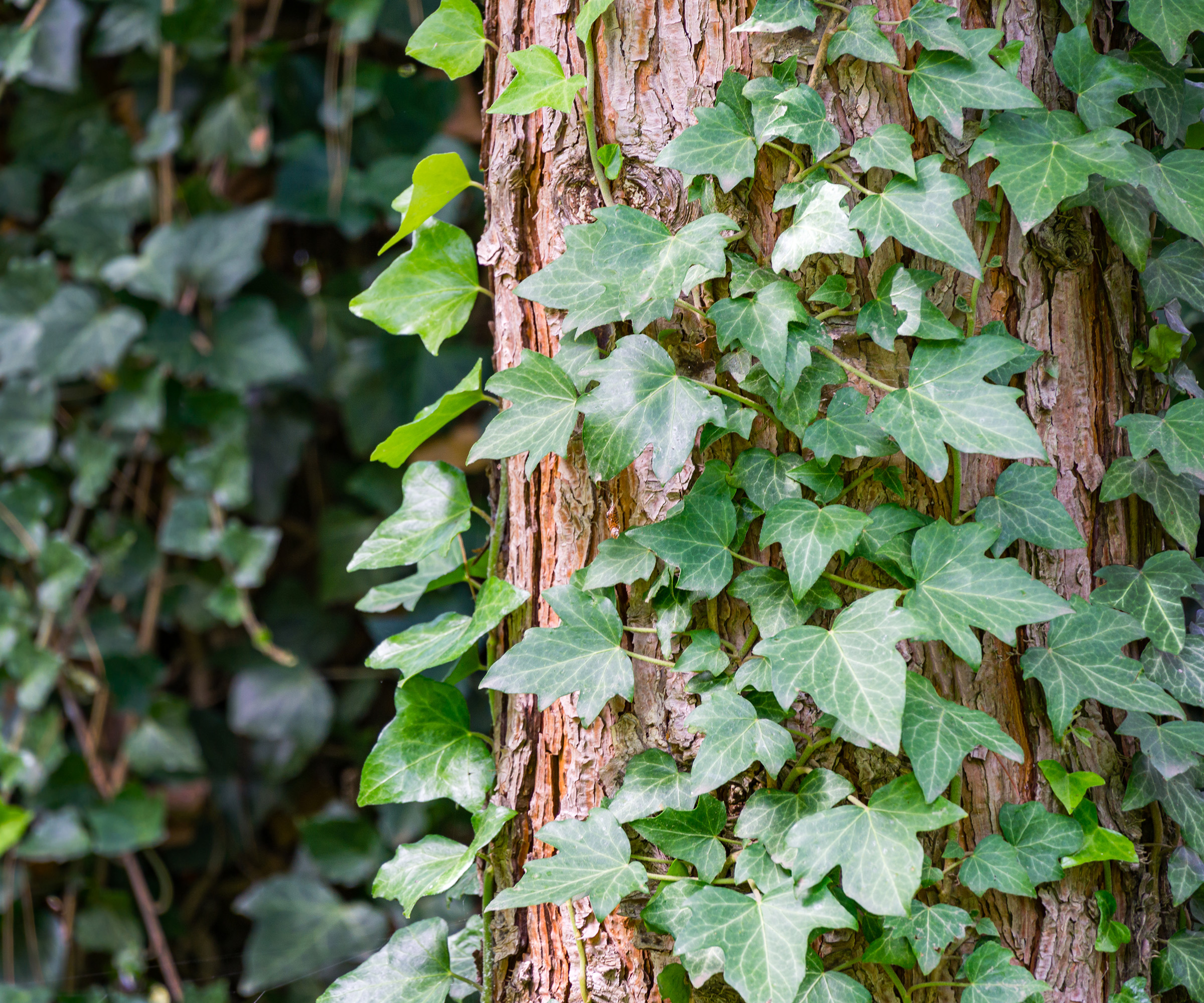How to kill ivy step-by-step – stop this climbing vine damaging your home
Experts explain how to kill ivy to stop it taking over your house and garden

Knowing how to kill ivy if it becomes invasive is an important task. Though an ivy covered wall may be considered a romantic sight to some, ivy can cause damage to masonry, trees and other plants if left too long unchecked.
Ivy is a world-class climbing plant, which is one reason gardeners love it so much, for creating lush coverage for your garden landscaping ideas with little or no effort. However over time, their clingy habit can work its way into cracks and crevices, undermining your structures.
"Removing ivy from trees, fences, and walls should be a considered and thoughtful process. Ivy is not parasitic and, therefore, does not harm most trees that are in good health."
"It also has much wildlife value. Its dense growth habit is perfect for a myriad of wildlife, from butterflies and beetles to birds. However, there may be times when removal is the only remedy," says Mark Lane, gardening expert at Stannah and BBC Gardeners’ World presenter.

Stannah’s gardening expert, multitalented gardening expert and author, he’s widely known for presenting BBC Morning Live and BBC Gardeners' World. Mark has earned many awards, including the ‘first garden designer in a wheelchair'.
How to kill ivy step-by-step
"By clinging to surfaces and penetrating cracks and crevices, ivy can cause damage to buildings, walls, and trees. Over time, this can undermine the integrity of walls and other structures," says Jane Dobbs, of garden maintenance company Allan's Gardeners.
As with how to get rid of bindweed, sometimes this comes down to pulling ivy up by to roots as it appears. But there is also more to it. Below the experts explain how to kill weeds naturally and how to use chemicals, if you're really desperate to get rid of ivy and keep it from getting out of control.
What you'll need:
Bring your dream home to life with expert advice, how to guides and design inspiration. Sign up for our newsletter and get two free tickets to a Homebuilding & Renovating Show near you.
- Rubber gardening gloves (try Wickes Gardening Gloves at Wickes)
- A pair of sharpened Garden shears
- A spray bottle or sprayer
- A weed killer of your choice (see below)
- Long sleeves and trousers
- Boots or strong shoes
1. Sever the vines from the base of the plant
"The two native ivies found in the UK are Hedera helix and H. hibernica. The former is the most pernicious," says Mark Lane. They are nowhere near as invasive as Japanese Knotweed, but ivy are still plants that can damage homes.
"In order to remove ivy from walls you should first cut off the vines and aerial roots from the base. Then gradually pull away at the vines. Ivy sticks to the wall due to microscopic hairs called setae and tiny globules that have extreme stickiness."
If it's a big job you may want to use your best strimmer. "Ideally, leave the severed vines to crisp up. Sections of the vines can then be pulled upwards to lift them off the wall’s surface, but a wire brush will help remove any stubborn parts."
"It is the aerial roots that will be the most stubborn. Do not be tempted to go in quickly to try to remove the roots. If the roots have managed to work their way into cavities and the mortar, this must be undertaken carefully to avoid further damage to the wall," says Mark.

2. See to the roots
"The stump and roots of ivy plants can be removed either by digging them out by hand or by using a mini digger with a small bucket. However if the ivy stump is next to a tree and the tree’s roots prevent digging, then cutting it back regularly may help weaken the ivy plant, but it won’t kill it," explains Mark Lane.
If you practise organic gardening, vinegar and other natural methods can be effective when removing ivy. "One gallon of white vinegar with a teaspoon of dish soap can get rid of ivy forever. Take care however as this can damage surrounding plants," says garden building expert Sam Jenkinson.
"Another eco-friendly and effective option for removing ivy and its root system is green mulching," says gardening expert, Fiona Jenkins. "Creating multiple layers of mulch on top of your ivy’s root system suffocates the roots and inhibits the growth by cutting off the supply of air, light and water."
"This option is not time-sensitive and may require some patience - however, it is still highly effective," says Fiona.

Sam is an expert in constructing and maintaining garden buildings at Tiger.

3. Use weed killer as last resort
"When all else fails, spray the stump and roots with weedkiller. Try Roundup Fast Action Weedkiller Pump 'N Go Ready To Use Spray, 5 Litre at Amazon. Remember to spray on dry days when there is no wind. Weedkillers should not be allowed to get onto other plants, as they will kill them. If in doubt, always get professional advice," says Mark Lane.
"Continual garden maintenance and good gardening practices will help keep ivy at bay, but if all else fails then a weedkiller, as mentioned above, should be the last resort," says Mark.

How to remove ivy from trees
"If the tree has a weak, thin crown or areas of decay, or you’re growing the tree for its attractive bark, it might be prudent to remove it," says Mark Lane.
"Cut the ivy stem at the base and carefully peel it away, avoiding damaging the tree bark. Monitor for regrowth and remove shoots promptly," says Sam Jenkinson.
"A weed-suppressant membrane and a thick mulching of bark could be laid over groundcover ivy to prevent light from getting to the leaves. If it’s an area just covered with ivy and no other plants, then thick black plastic could be laid over the ivy and pegged down to prevent it from blowing away. This, too, will stop light from getting to the ivy plant," says Mark.

FAQs
Should I remove ivy from my house?
"When given a solid base, ivy can crawl up to 30 metres high. Despite how beautiful this piece of nature is, it can still cause trouble around your property and garden wall ideas if left unattended. It can make its way into cracks and crevices causing structural damage," explains Jane Dobbs of garden maintenance service Allan's Gardeners.
"Ivy vines can attach themselves to walls with aerial roots or adhesive pads. If ivy leaves and vines cover a large area, they can trap moisture against exterior walls. Long-term moisture exposure can cause building materials to deteriorate, become damp, and grow mould," says Jane.
You should also be aware that pests and insects love ivy. "Ivy doesn't cause pest infestations directly, but it can create an attractive environment for them. Ivy offers a dense and sheltered environment, which attracts various pests looking for shelter from predators or harsh weather. The damp areas left by Ivy on the exterior of buildings may attract moisture-loving pests such as ants, snails, and slugs. Ivy may be a good hiding spot for mice and rats as well," says Jane.
"Continual garden maintenance and good gardening practices will help keep ivy at bay, but if all else fails then a weedkiller, should be the last resort," adds Mark Lane.

Responsible for leading the gardening team at Allan's Gardeners, a landscaping and garden maintenance business based in London. She has 10 years experience as a gardener.
Does vinegar really kill ivy?
"Like the weedkillers, the vinegar solution will also help kill other plants in the immediate vicinity, so screen off those plants that you want to keep with cardboard or sheet plastic to protect them," says Mark Lane, gardening expert at Stannah and BBC Gardeners’ World presenter
Jane Dobbs of garden maintenance company Allan's Gardeners explains that ivy dies from the effects of acetic acid in vinegar, which acts as a desiccant. "Vinegar has its limits, so use it wisely."
"Grab a spray bottle or a garden sprayer. Put 80% water and 20% vinegar in the container. Be careful not to spray other plants you don't want to kill with the ivy spray."
"Remove any dead ivy after a couple of days and reapply the same solution. Vinegar works best on the above-ground parts of ivy. After the foliage dies, remove as many roots as possible to prevent regrowth," says Jane.
What is the best killer for ivy?
"The most effective way to kill ivy is to sever the stem as close to soil level and then treat the stump with a root killer containing glyphosate, and then digging out any new shoots as soon as they appear to stop the plant from regrowing," says garden building expert for Tiger, Sam Jenkinson.
How to remove ivy from my timber garden building?
"Removing ivy from your timber garden building requires careful steps to keep the structure safe and get rid of all the ivy," says garden building expert for Tiger, Sam Jenkinson.
"Cut the main stems at the bottom first. Then, use a garden fork to gently remove the vines, being careful not to damage the wood. Gently use a scraper to get rid of any remaining root bits."
"You can also try using a safe weedkiller or vinegar, however if your timber garden building isn't treated these may absorb into the wood and cause damage. If you're unsure, it's best to get advice from a professional."
Ivy can hide existing problems in your structures. Once you've cleared your wall of ivy you may noticed that there are issues that need tending to. For example needing to remove a brick from a wall and replace it with a new one.

Teresa was part of a team that launched Easy Gardens in 2018 and worked as the Editor on this magazine. She has extensive experience writing and editing content on gardens and landscaping on brands such as Homes & Gardens, Country Homes & Interiors and Living Etc magazine. She has developed close working relationships with top landscape architects and leading industry experts, and has been exposed to an array of rich content and expertise.
In 2020 Teresa bought her first home. She and her partner worked alongside architects and builders to transform the downstairs area of her two bedroom Victorian house in north London into a usable space for her family. Along the way she learned the stresses, woes and joys of home renovation, and is now looking to her next project, landscaping the back garden.
